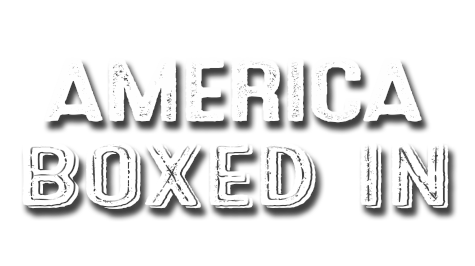
About
AMERICA BOXED IN
It all started in 1937 with a young truck driver named Malcom McLean while delivering cotton bales from Fayetteville, North Carolina, to Hoboken, New Jersey. Arriving in Hoboken, McLean was forced to wait hours to unload his truck trailer. He recalled: “I had to wait most of the day to deliver the bales, sitting there in my truck, watching stevedores load other cargo. It struck me that I was looking at a lot of wasted time and money. I watched them take each crate off the truck and slip it into a sling, which would then lift the crate into the hold of the ship.” He marveled at the inefficiency of the process. “Wouldn’t it be great,” he asked himself, “if my trailer could simply be lifted up and placed on the ship?” In 1955, he gambled big on a container venture, buying two oil tankers and securing a bank loan to buy $42 million worth of docking, shipbuilding, and repair facilities. He refitted the ships and designed trailers to stack below or on the decks.
On April 26th 1956 his first ship, the Ideal-X, left the Port of Newark, New Jersey to the Port Houston, Texas, which it called 5 days later. It carried 58 35-feet (8 feet wide by 8 feet high) containers, along with a regular load of 15,000 tons of bulk petroleum.
Loading loose cargo on a medium-sized cargo ship cost $5.83 per ton in 1956. McLean’s experts pegged the cost of loading the Ideal-X at 15.8 cents per ton—a 97 percent per-ton cost reduction. On that day the economics of shipping and the entire world economy changed forever.
At the time, no-one could have predicted the degree to which this uniform steel-box would integrate the 20th century global economy and transform the entire world into next-door neighbors. Likewise, they could not have predicted how that integration would compromise state sovereignty and become a chief cause of much 21st century insecurity and turmoil.
Today, our global village is one where terrifying new security threats increase rapidly and state authority is significantly challenged; where a vast polarization in world politics advances relentlessly; and where a new generation of rising economies are staking their own global claims.
The container stands between two issues critical to 21st century prosperity and peace. On the one hand, is the issue of open market “freedom” and the steady march of a more unified global economy. On the other hand, is the issue of sovereign state “security” and the fierce defense of national independence. In between is globalization’s “Pandora’s Box.”
FEATURING INSIGHTS AND COMMENTARY BY CURRENT AND FUTURE WORLD LEADERS AND SCHOLARS
THE PRESIDENT

“We should level the playing field. That’s why I’m asking both parties to give me trade promotion authority to protect American workers, with strong new trade deals from Asia to Europe that aren’t just free, but are also fair.”
Barack Obama – Former US President
THE STATESMAN

“The United States welcomes the rise of a peaceful, prosperous and stable China: one that plays a responsible role in Asia and the world and supports rules and norms on economic and security issues.”
John Kerry – Former Secretary of State
THE SCHOLAR

The “value of this utilitarian object lies not in what it is, but in how it is used. The container is at the core of a highly automated system for moving goods from anywhere, to anywhere, with a minimum of cost and complication along the way.”
Marc Levinson – Author, “The Box”








